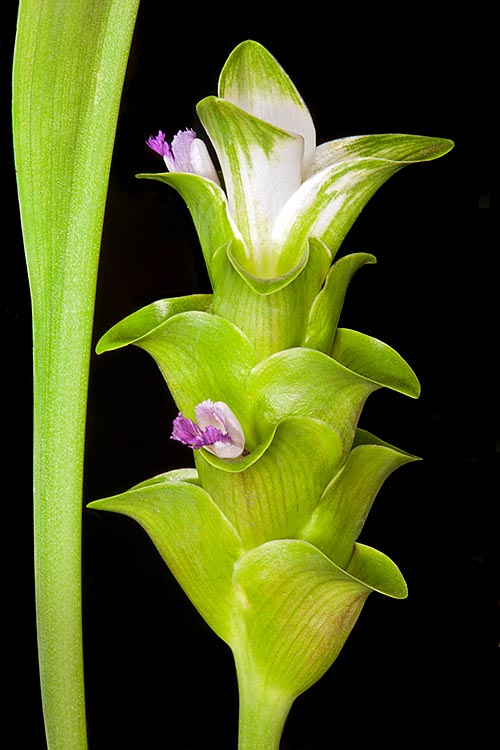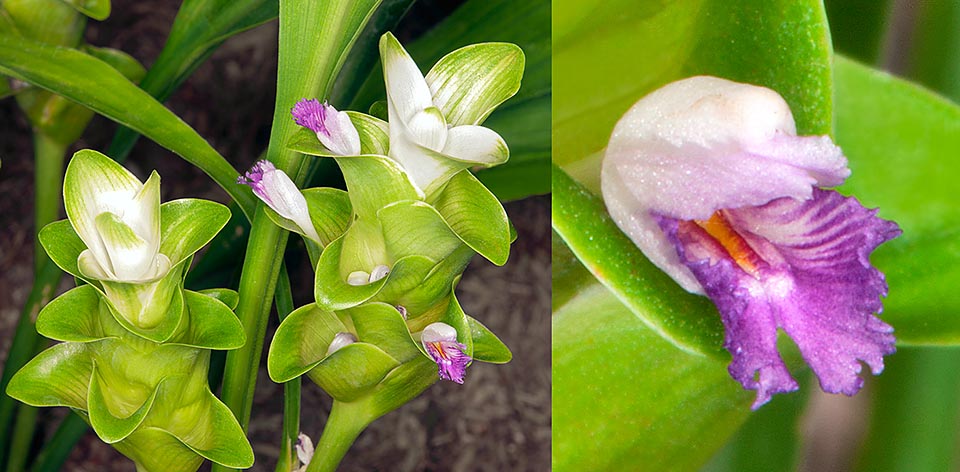Family : Zingiberaceae

Text © Pietro Puccio

English translation by Mario Beltramini

Deciduous rhizomatous perennial herbaceous, Curcuma parviflora grows in dense Peninsular Malaysia, Myanmar, Thailand and Vietnam forests up to 700 m © Mazza
The name of the genus comes from the Arabic “kurkum” = saffron, with reference to the saffron colour of the rhizome of the Curcuma longa L. (1753); the name of the species is the combination of the Latin adjective “parvus, a, um” = small, ad of the substantive “flos, oris” = flower, with obvious reference.
Common names: dork grajeaw, krachieo khaao (Thai); nghệ hoa nhỏ (Vietnamese).
The Curcuma parviflora Wall. (1830) is an erect, deciduous, rhizomatous perennial herbaceous species, 20-50 cm tall, with horizontal fleshy rhizome, internally white.
The leaves, on a 10-30 cm long petiole, are ovate-oblong with pointed apex, and are 8-30 cm long and 4-12 cm broad, of intense green colour.
Inflorescence, on 7-25 cm long peduncle, terminal, erect, cylindrical, 5-12 cm long, formed by green imbricate ovate bracts, 1,5-3 cm long and 1-1,8 cm broad, enclosing 2-3 tubular flowers with white trilobed corolla, about 2 cm long, violaceous oblong-ovate labellum and white obovate-lanceolate staminodes; the upper bract, without flowers, are white and form a sort of a tuft at the apex of the inflorescence.
The fruits are ellipsoid capsules containing seeds provided with aril.
It reproduces by seed in loam rich of organic substance with addition of sand or perlite per a 30%, maintained humid and in shady position, at the temperature of 22-24 °C, but usually and easily by division during the resting time.
Species among the smallest of the genus, for its size, the ornamental foliage and the long lasting inflorescence, about one month, is often cultivated in pot for the decoration of luminous interiors.
In open air, is cultivable in the humid tropical and subtropical climate zones, in semi-shady position, on perfectly draining rich of humus soils, slightly acidic to neutral, maintained humid; at rhizome level, during the resting time, can resist to temperatures of some degree under the 0 °C only if completely dry.

Has 5-15 cm inflorescences with violaceous labellum small flowers emerging from the green imbricate bracts. The upper ones,white without flowers, form a tuft © Giuseppe Mazza
Synonyms: Hitcheniopsis parviflora (Wall.) Loes. (1930).
